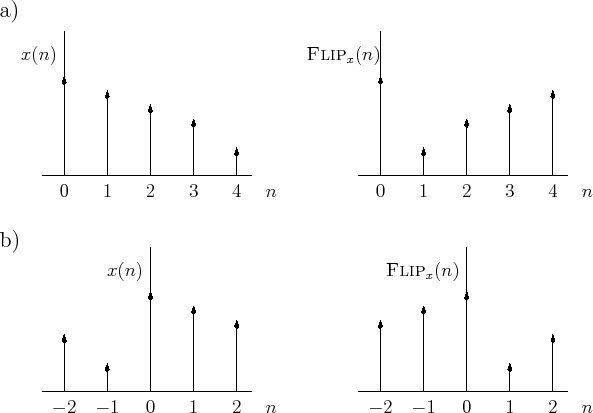Flip Operator
We define the flip operator by
 |
(7.1) |
for all sample indices

.
By
modulo indexing,

is the same as

. The

operator
reverses the order of samples

through

of a sequence, leaving
sample 0 alone, as shown in Fig.
7.1a. Thanks to modulo
indexing, it can also be viewed as ``flipping'' the sequence about the
time 0, as shown in
Fig.
7.1b. The interpretation of Fig.
7.1b is usually the one we
want, and the

operator is usually thought of as ``time reversal''
when applied to a
signal 
or ``frequency reversal'' when applied to a
spectrum 
.
figure[htbp]

Next Section: Shift OperatorPrevious Section: Operator Notation